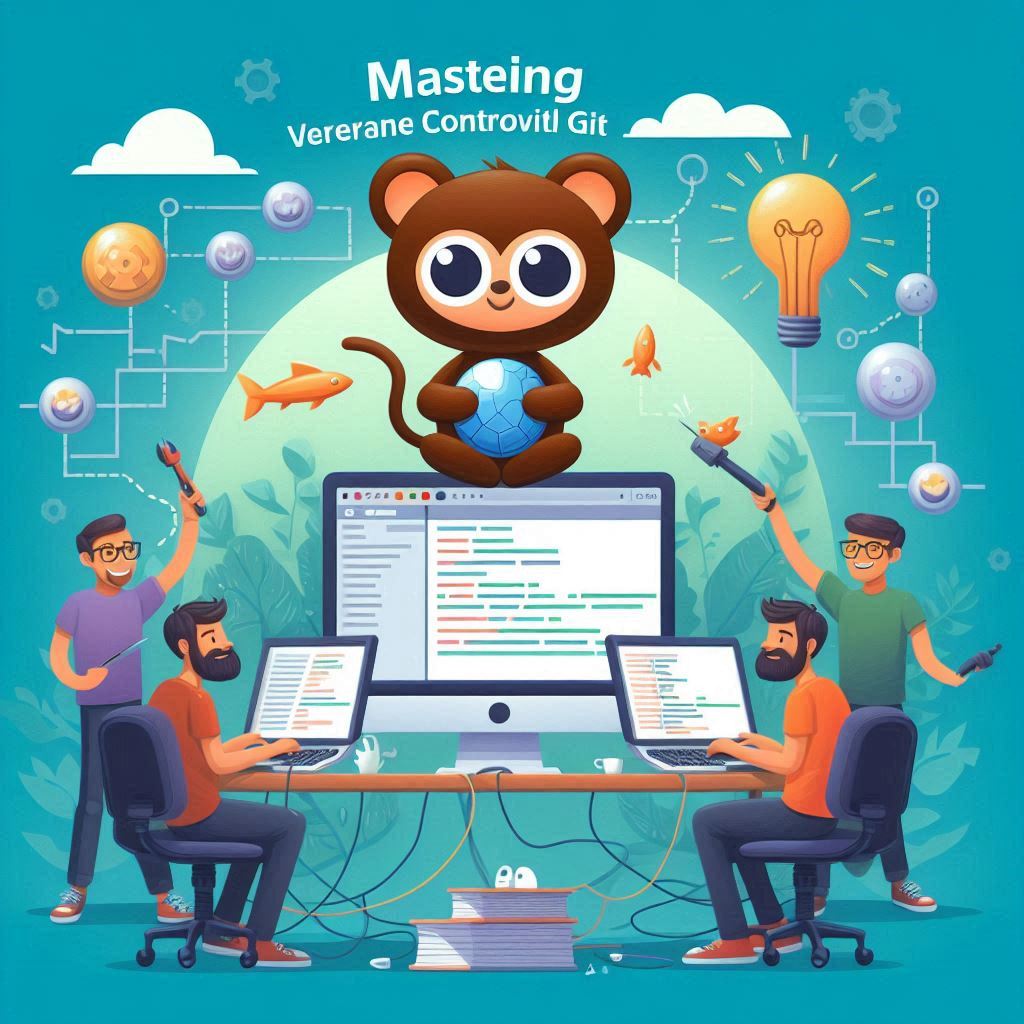
- November 25, 2024
- 7:28 am
Mastering Version Control with Git: Best Practices for Software Development Teams
Introduction
In modern software development, effective version control is essential. Git has become the industry-standard tool, allowing developers to collaborate, manage code changes, and maintain project history efficiently. However, mastering Git involves more than basic commands—it requires understanding best practices, branching strategies, and advanced features to streamline workflows and minimize errors. In this guide, we’ll dive into best practices for using Git, explore effective branching strategies, and uncover advanced Git features to help your development team collaborate more effectively.
Why Git is Essential for Software Development Teams
Git enables developers to work on a shared codebase without stepping on each other’s toes. It allows for:
- Concurrent Development: Multiple developers can work on different parts of the codebase simultaneously.
- Project History Tracking: Every change is logged, providing an audit trail for bug fixes, new features, and other updates.
- Error Recovery: Git’s version history makes it easy to revert to previous states, saving time and reducing frustration.
Mastering Git best practices and strategies can improve team productivity, ensure code stability, and streamline the release process.
Git Best Practices for Effective Version Control
1. Make Commits Small and Purposeful
Keeping commits small and focused improves the readability of your project history, makes reviewing code easier, and allows for faster debugging when issues arise. Each commit should ideally reflect a single change or fix, allowing for clear tracking of modifications.
Example: If you’re adding a new feature, break down the commits by related changes (e.g., “Add feature’s base structure,” “Implement feature logic,” “Add unit tests for feature”).
2. Write Descriptive Commit Messages
Commit messages should clearly explain the purpose of a change, making it easier for other team members to understand what has been modified and why. Use a standard format for commit messages (e.g., “type: description”) to maintain consistency.
Suggested Format for Commit Messages:
- Title (short summary of the change, 50 characters or less)
- Body (optional: a more detailed explanation, 72 characters per line)
- Footer (optional: additional notes, issue numbers, etc.)
Example:
vbnet
fix: Correct button alignment issue on mobile
The button was overlapping text on smaller screens due to margin errors.
Added responsive CSS rules to resolve the issue.
3. Commit Frequently, Push Regularly
Frequent commits allow for detailed version history, and regular pushes help keep the team up to date with ongoing changes. By pushing regularly, you minimize the risk of large, conflicting merges and improve collaboration.
- Frequent Commits: Commit your work at logical points, like after a specific feature is complete or a bug is fixed.
- Regular Pushes: Push your changes to the shared repository often to make sure others can integrate them sooner rather than later.
4. Keep the Main Branch Clean and Stable
In Git workflows, it’s essential to keep the main branch (often called main or master) stable and free of untested code. Avoid committing directly to the main branch and only merge fully tested and reviewed code.
5. Use .gitignore to Exclude Unnecessary Files
Avoid committing temporary files, local configurations, or other unnecessary items by defining them in a .gitignore file. This prevents clutter in your repository and ensures you’re not accidentally sharing sensitive or irrelevant information.
Effective Branching Strategies for Git
Branching allows developers to work on different parts of a project simultaneously without interfering with each other. Here are some popular Git branching strategies:
1. Git Flow
Git Flow is a branching model that works well for large projects with regular releases. It has two main branches: main and develop.
- Main Branch: Holds production-ready code only.
- Develop Branch: Contains code ready for the next release.
- Feature Branches: Used to develop individual features, merged into develop when complete.
- Release Branches: Created from develop when a release is ready, allowing for final testing and bug fixes.
- Hotfix Branches: Used to quickly address issues in production code, merging changes back to both main and develop.
Git Flow is effective for projects with scheduled release cycles, but it can be complex for smaller teams or projects with continuous deployment needs.
2. GitHub Flow
GitHub Flow is a simpler branching strategy commonly used in projects with continuous delivery.
- Main Branch: The main branch contains code that’s ready for production.
- Feature Branches: Developers create branches off of main for individual features or bug fixes. These branches are merged back into main when changes are complete and approved.
This strategy is easier to manage than Git Flow and works well for smaller projects or teams practicing continuous deployment.
3. GitLab Flow
GitLab Flow combines the simplicity of GitHub Flow with elements of Git Flow, offering a middle ground for projects with both regular releases and a need for hotfixes.
- Production Branch: For production-ready code only.
- Main Branch: Often holds the latest stable code version.
- Environment Branches: Development or staging branches that mirror the application’s deployment environments.
GitLab Flow is a flexible model, allowing teams to balance continuous delivery with scheduled releases.
Advanced Git Features to Enhance Collaboration
1. Rebasing for a Cleaner History
Git rebase lets you modify your commit history by integrating changes from one branch into another. Unlike merging, rebasing rewrites the commit history to create a linear sequence, reducing clutter and improving readability.
When to Use Rebasing:
- For feature branches, rebasing onto main can help ensure a clean, linear history when merging.
- Avoid rebasing shared branches, as it can lead to conflicts for other team members.
2. Cherry-Picking for Selective Changes
Git cherry-pick allows you to copy specific commits from one branch to another without merging the entire branch. This is especially useful if you need to apply a bug fix or feature to multiple branches without merging all changes.
Example: Apply a bug fix from feature/login-fix to the main branch without merging unrelated commits from the feature branch.
3. Stashing for Temporary Work Storage
Git stash is a helpful feature when you need to temporarily save changes without committing. This is useful if you’re in the middle of a task but need to switch to another branch.
Example: If you’re working on a feature and need to switch to a hotfix branch, you can stash your changes, switch branches, and then apply (pop) the changes back when you return to your original work.
4. Hooks for Workflow Automation
Git hooks are scripts that run automatically at specific points in your Git workflow (e.g., before committing or after merging). They’re useful for automating code quality checks, running tests, or formatting code before it’s committed.
Common Use Cases:
- Pre-Commit Hook: Run tests or linting to catch errors before they’re committed.
- Post-Commit Hook: Automatically deploy or notify team members of updates.
Setting up hooks can reduce errors and ensure consistency across the team.
Conclusion
Mastering Git requires more than just knowing basic commands; it involves adopting best practices, selecting a suitable branching strategy, and utilizing advanced features to enhance team collaboration. By keeping commits small, writing descriptive commit messages, and selecting the right branching model, your team can manage version control effectively. And with advanced Git features like rebasing, cherry-picking, and hooks, you can streamline workflows and improve code quality.
Call to Action
Ready to level up your Git skills? Start by implementing these best practices and explore branching strategies that suit your team’s workflow. With the right version control habits in place, your team can collaborate more effectively and deliver quality code with confidence. Happy coding!
Hey
I'm Emma!

Lorem ipsum dolor sit amet, consectetur adipiscing elit. Ut elit tellus, luctus nec ullamcorper mattis, pulvinar dapibus leo.
